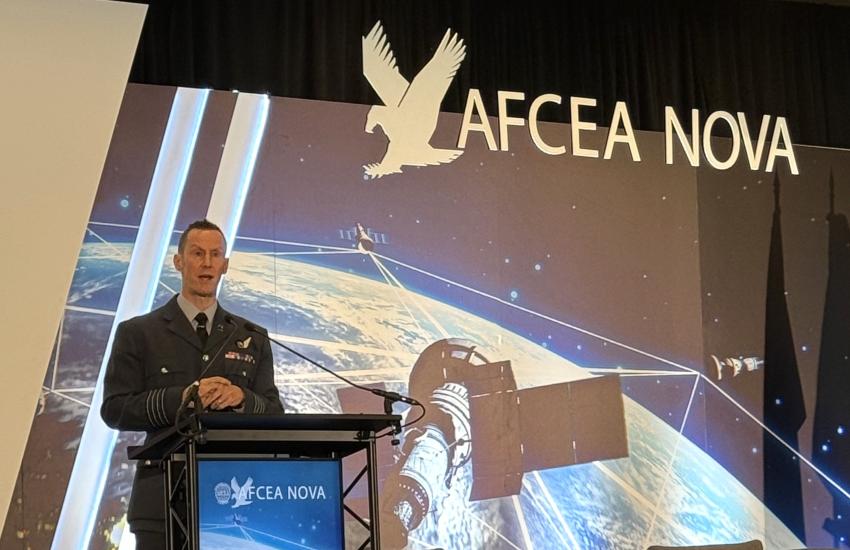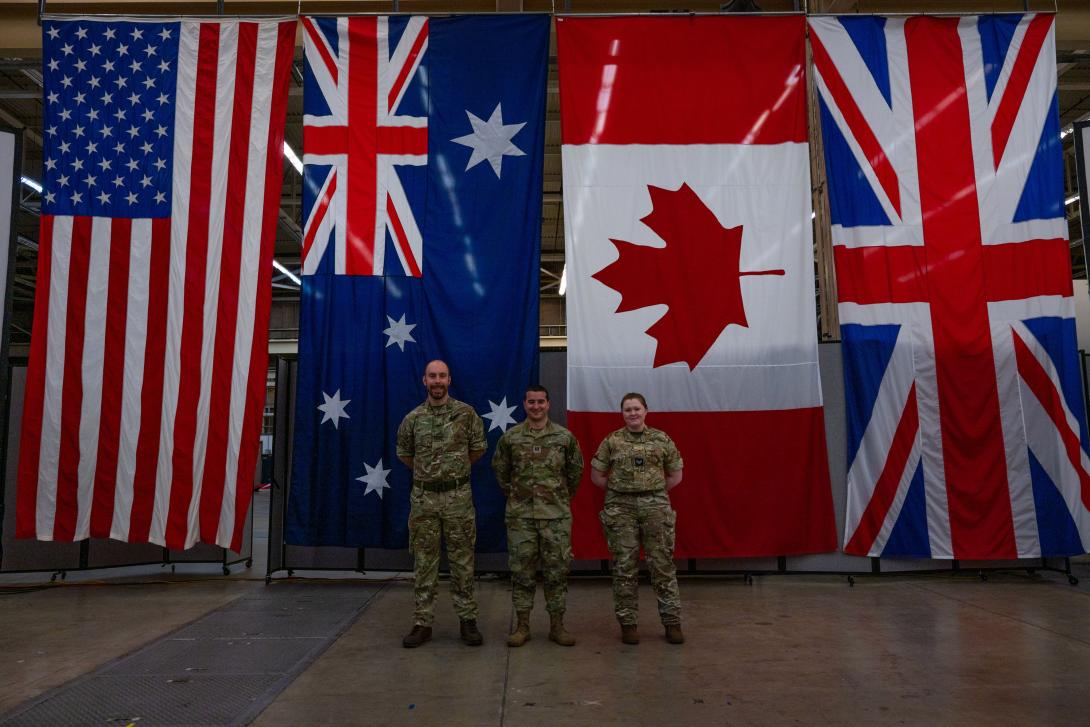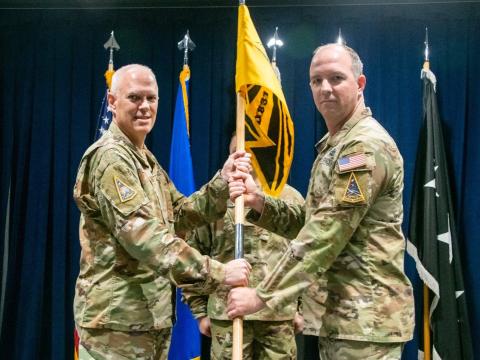International Partnerships Are Key to Space Resilience
In the complex geopolitical environment and the increasingly contested space domain, our international partners will be crucial to our space superiority. No single nation, not even the United States, has the resources needed to dominate this contested domain, said Royal Air Force Group Capt. Jonathan Farrow, OBE, S-5, Royal Air Force (RAF) Exchange Officer to the U.S. Space Force (USSF).
Farrow, a decorated RAF combat veteran, served in Iraq and Afghanistan, and is now the deputy director of strategy, futures, partnerships and requirements at USSF headquarters at the Pentagon. He spoke at AFCEA NOVA’s Space Force IT Day, held in Chantilly, Virginia, on May 1.
He clarified that as a British RAF exchange officer, “on loan from the King,” he was representing the United States’ perspective, given his new role.
"We understand that operating alongside allies and partners in space is absolutely essential for securing our collective national security interests,” he confirmed. “We need to ensure freedom of action in what is an increasingly contested space domain, and we must prioritize and constantly improve our collaboration, communication and engagement, and also our joint testing too.”
Especially for the USSF, which is the smallest branch of the U.S. military and has a budget that, while substantial by global standards, falls short of the expansive mission set the Department of Defense (DOD) is asking it to execute, which Gen. Chance Salzman, chief of space operations, has recently testified about, Farrow noted.
And it is this mismatch between resources and responsibilities that drives the need for international partnerships. “Because of this, we recognize that we can't go at it alone,” Farrow stated.
He cites as successes several programs that have enabled resiliency and redundancy for space systems—designed to avoid single points of failure—including the Wide Band Global Satellite Communications program with eight partnering nations. The Combined Space Operations initiative has just marked its 10th anniversary, and with ten participating nations, has focused on developing resilient, interoperable architectures.
In addition, the U.K.’s Fylingdales radar station in the North Yorkshire part of the country has served as one of the key sites in the ballistic missile early warning system. It is also one of the longest-running examples of international partnership, with decades of cooperation between the United States and the United Kingdom, Farrow shared.
More recently, the Deep Space Advanced Radar Capability, a trilateral project involving the United States, United Kingdom and Australia, will enable collective space situational awareness capabilities. Sites are already under construction around the globe, thanks to the significant investments by the countries.
Also, the Multinational Force Operation Olympic Defender, known as MNF OOD, includes seven nations—Australia, Canada, the United Kingdom, the United States, France, Germany and New Zealand. The force formally achieved initial operating capability in April 2025, Farrow noted. The MNF OOD is a way to further integrate military spacepower, reduce the spread of space debris, enable joint and combined force operations, all to deter aggression, and, if necessary, defeat adversaries to retain military advantage.

Naturally, the progress of strengthening partnerships is not without its challenges. Farrow identified the perennial issue of classification and information sharing. “Collectively, our red forces probably know more about blue capabilities than the blue know about each other,” Farrow observed.
Recent changes to DOD’s classification policy have helped, but need further implementation, policy changes, additional resources for disclosure offices and sustained leadership attention.
In addition, nations have differing national policies, and balancing these in a partnership can be challenging.
The parties must forge ahead, given what is at stake, Farrow emphasized.
“We, as the U.S. Space Force, really see the role of allies and partners to be absolutely fundamental to achieving space superiority,” he said. “I think it's only through these alliances that we will be able to gain the shared technological advancements that we need, to not only gain but to maintain that technical strategic advantage, not just for tomorrow, but for decades to come.”





Comments